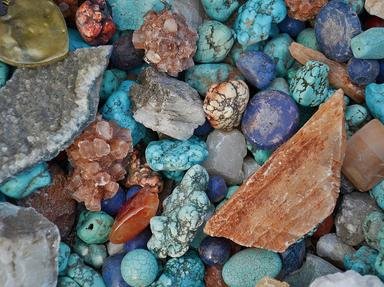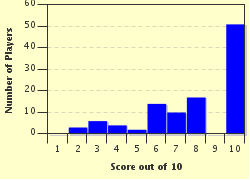Quiz Answer Key and Fun Facts
1. Mohs 1: hydrated magnesium silicate; softest known mineral, used as baby powder
2. Mohs 2: calcium sulfate dihydrate; often used in chalk and plaster
3. Mohs 3: most stable form of calcium carbonate
4. Mohs 4: mineral form of calcium fluoride
5. Mohs 5: a group of calcium phosphate minerals; major constituent of tooth enamel
6. Mohs 6: tectosilicate mineral whose name means 'straight fracture' in Greek
7. Mohs 7: silicon dioxide; colorless when pure; colored varieties common gemstones
8. Mohs 8: silicate mineral with a wide range of colors; orange form is a traditional birthstone for November
9. Mohs 9: crystalline aluminium oxide; red form is ruby; other colors are called sapphires
10. Mohs 10: allotrope of carbon which is the hardest naturally-occurring mineral
Source: Author
looney_tunes
This quiz was reviewed by FunTrivia editor
rossian before going online.
Any errors found in FunTrivia content are routinely corrected through our feedback system.

